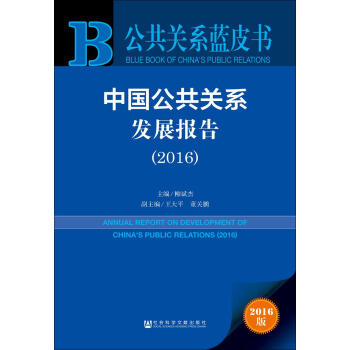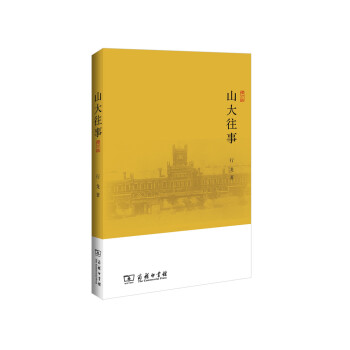![翻譯的修辭符號視角研究 [TOWARD A RHETORICAL-SEMIOTIC THEORY OF TRANSLATION]](https://pic.windowsfront.com/11407870/rBEhWFMv2dQIAAAAAAD8JocAdQkAAKmZAHTTx4AAPw-954.jpg)

具體描述
編輯推薦
適讀人群 :專業讀者現代語言學為翻譯和翻譯活動提供瞭比較科學的理論基礎。目前大量的翻譯研究都將翻譯納入語言學的範疇內,聚焦於語音學、形態學和句法學的層麵。基於此,《翻譯的修辭符號視角研究》構建瞭翻譯的修辭符號學視角研究,以打破翻譯研究的這一局限性,並論證瞭其作為一個嶄新的突破性的方法在解釋長期以來關於翻譯等效、直譯與意譯、歸化與異化的爭論中的優越性,闡明瞭修辭符號意義在翻譯中的傳遞。
內容簡介
《翻譯的修辭符號視角研究》在構建修辭符號學理論的基礎上,在現有的翻譯理論框架下探討修辭符號學視角的翻譯研究,《翻譯的修辭符號視角研究》旨在解決翻譯的符號意義問題,演示修辭符號學如何為符閤的翻譯建立邏輯範式,由此闡釋兩種語言係統和文化之間符號翻譯中的意義缺失。
翻譯是把一種語言承載的信息用另一種語言錶達齣來。現代語言學為翻譯和翻譯活動提供瞭比較科學的理論基礎。目前大量的翻譯研究都將翻譯納入語言學的範疇內,聚焦於語音學、形態學和句法學的層麵。基於此,本書構建瞭翻譯的修辭符號學視角研究,以打破翻譯研究的這一局限性,並論證瞭其作為一個嶄新的突破性的方法在解釋長期以來關於翻譯等效、直譯與意譯、歸化與異化的爭論中的優越性,闡明瞭修辭符號意義在翻譯中的傳遞。
作者簡介
作者曹磊,博士,上海外國語大學講師,擔任過多門課程授課老師,包括高級綜閤英語、聽力與口譯、語言學、視聽等課程。發錶的論文有《從符號學角度談翻譯》、《語篇修辭性與翻譯》、《論口譯和筆譯的關係》、《語篇意識觀照下的翻譯》等。參與編寫過多本專業英語教材,有自考本科教材《聽力與口譯》、《中級口譯教程》、《基礎口譯教程》、《商務英語口語》等。
目錄
Chapter 1 Introduction
1.1 Origin and Rationale for the Present Study
1.2 Definitions of Key Terms
1.3 Objectives of the Research
1.4 Methodology
1.5 Organization of the Dissertation
Chapter 2 Literature Review
2.1 About Translation Studies
2.1.1 Definition and Development of Translation Studies
2.1.2 Integrated and Interdisciplinary Approaches to Translation Studies
2.1.2.1 Integrated Approaches to Translation Studies
2.1.2.2 Interdisciplinary Approaches to Translation Studies
2.1.3 Non-Western Traditions in Translation Studies
2.1.4 New Trends
2.2 Issues and Debates in Translation Studies
2.2.1 Equivalence
2.2.1.I Nida's Concept of Formal Equivalence
2.2.1.2 Nida's Concept of Dynamic Equivalence
2.2.1.3 Other Concepts of Equivalence
2.2.1.4 Summary
2.2.2 Context in Translating
2.2.2.1 Register Analysis
2.2.2.2 Context and Translation
2.2.2.3 Summary
2.2.3 The Translator's Role
2.2.3.1 The Translating Process
2.2.3.2 Translatability and Untranslatability
2.2.3.3 Foreignization and Domestication
2.2.3.4 Summary
Chapter 3 Toward a Rhetorical-Semiotic Approach in Translation Studies
3.1 Key Concepts in Semiotics
3.1.1 The Meaning of Signs
3.1.2 Semiotics
3.1.2.1 De Saussure's Sign Systern
3.1.2.2 Peircean Signification System
3.1.2.3 Roland Barthes' Notion
3.1.3 Semiotic Science
3.1.3.1 Logical Semiotics
3.1.3.2 Linguistics as a Branch of Semiotics
3.1.3.3 Syntax, Semantics and Pragmatics
3.1.3.4 Semiotics of Texts
3.2 Semiotic Approach toward Rhetoric
3.2.1 The Revival and Development of Western Rhetoric
3.2.2 Peirce's Rhetorical Turn
3.2.3 Semiotic Approach toward Rhetoric
3.3 Toward a Rhetorical-Semiotic Approach in Translation Studies
3.3.1 Translation and Semiotics
3.3.2 Rhetorical Translation Studies
3.3.3 The Translating of Meaning
3.3.4 Message Decoding and Encoding —— the Process of Translation
3.3.4.1 Context
3.3.4.2 Code
3.3.4.3 Decoding and Encoding
3.4 Summary
Chapter 4 Rhetorical Encoding of Linguistic Signs
4.1 Communication, Linguistic Expressions and Rhetorical Encoding of Linguistic Signs
4.1.1 Characteristics o{ Communicative Activities
4.1.2 Definition of Rhetorical Encoding
4.1.3 Guidelines of Rhetorical Encoding
4.1.3.1 Conventions
4.1.3.2 Logic
4.1.3.3 Appropriateness
4.1.3.4 Pragmatic Purposes
4.2 Classification of Rhetorical Encoding
4.2.1 Logic Rhetorical Encoding of Linguistic Signs
4.2.1.1 The Category of Logic Signs
4.2.1.2 Basic Function of Logic Rhetoric
4.2.1.3 Meticulous, Compact and Intact Quality
4.2.1.4 Denotative and Monosemantic Referential Meaning
4.2.1.5 Objective, Reasoning and "Hot" Messages
4.2.2 Aesthetic Rhetorical Encoding of Linguistic Signs
4.2.2.1 Expressive Aesthetic Signs
4.2.2.2 Aesthetic and Emotional Functions
4.2.2.3 Flexible and Open Quality
4.2.2.4 Connotative Semantic Reference
4.2.2.5 Subjective, Emotional and "Cold" Messages
4.2.3 Semantic Rhetorical Encoding and Rhetorical Encoding of Linguistic Forms
4.2.3.1 Thoughts and Emotions
4.2.3.2 Linguistic Images
4.3 Summary
Chapter 5 Rhetorical Decoding of Linguistic Signs
5.1 Definition of Rhetorical Decoding
5.2 The Capabilities Required by Rhetorical Decoding of
Linguistic Signs
5.2.1 A Thorough Knowledge of the Linguistic Sign System
5.2.2 Strong Capability of Logic Thinking and Reasoning
5.2.3 Strong Image Thinking Ability
5.2.4 Being Rhetorically and Artistically Accomplished
5.2.5 Correspondent Cognitive Abilities, Intellectual Level and Emotional Experience
5.3 Classification of Rhetorical Decoding
5.3.1 Logic Rhetorical Decoding of Linguistic Signs
5.3.1.1 Literal Logic Decoding of Linguistic Signs
5.3.1.2 Free Logic Decoding of Linguistic Signs
5.3.2 Aesthetic Decoding of Linguistic Signs
5.3.2.1 Semantic Interpretation
5.3.2.2 Image Aesthetic Appreciation
5.4 Summary
Chapter 6 The Retaining of Meaning in Translation from Rhetorical Semiotic Perspective
6.1 The Integration of Rhetorical Semiotics and Translation Studies
6.1.1 The Feasibility of Applying Rhetorical Theory to Translation Studies
6.1.2 The Construction of a Dynamic Meaning Theory of Translation
6.1.3 The Retaining of Meaning in Translation from Rhetorical-Semiotic Perspective
6.1.4 Summary
6.2 The Transfer of Meaning
6.2.1 The Transfer of Linguistic Meaning
6.2.1.1 Orthographic and Phonological Barriers ..
6.2.1.2 Grammatical Barriers
6.2.1.3 Barriers of Figures of Speech
6.2.2 The Transfer of Referential Meaning
6.2.3 The Transfer of Pragmatic Meaning
6.2.3.1 Cultural Words and Expressions
6.2.3.2 Idioms
6.2.3.3 Figures of Speech
6.2.3.4 The Reproduction of Register and Other Codes in Translation
Chapter 7 Conclusions and Implications
7.1 Major Findings and Contributions of the Study
7.2 Limitations of the Study
7.3 Areas for Further Research
Bibliography
Acknowledgements
精彩書摘
Undeniably, linguistic difference is the first barrier to be overcome so that communication may take place. However, some other kind of background knowledge must be shared by communicants in order for the message to be fully understood. It is at this point that rhetorical semiotics comes into play. The study of rhetoric is a study of the effect of linguistic communication. It concerns such factors as communicator (including the addresser and addressee of the linguistic message), the signifier and signified, linguistic context and so on, some of which belong to pragmatic domain. Therefore, pragmatics is a major part of semiotics. Rhetorical studies in the past somehow laid emphasis on the studies of technical skills of language use, and helped in enabling language users with concrete methods and techniques of linguistic expressions to improve communication effects. However, it lacks to some extent philosophical theoretic depth resulting in the difficulty in drawing inherent laws for rhetoric. Since C. S. Peirce and De Saussure laid foundations for modern semiotics, after continuous deepening and systemizing, semiotics has become a basic theory for social communication. The applications of semiotic principles and methods to various subjects and fields of social sciences, such as logic, linguistics, arts and natural sciences, are bringing them to a new philosophical height and enlightening understanding of their nature and governing laws. Semiotics has opened a new way to the in-depth studies of these subjects, thus gaining an important methodological meaning. Therefore, to apply semiotic principles and methods to rhetorical analysis and studies can provide a new revolutionary perspective for rhetorical studies.
Last but not least, rhetoric, in its essence, is the encoding of linguistic signs. But rhetoric is not confined to the study of general theories of linguistic sign encoding in the abstract sense, but sees from the perspective of concrete transmitting of linguistic messages. In this regard, semiotic study of rhetoric belongs to the domain of pragmatics. We maintain that losses of meaning in translation are sometimes better accounted for using the framework of rhetorical semiotics. Unlike linguistic models of translation, which overlook the cultural aspects, the rhetorical-semiotic perspective, with its guidelines of conventions, logic, appropriateness and pragmatic purposes, can clearly state the interrelation between our innate linguistic competence, using that competence, and connecting it to our culture.
All the above mentioned viewpoints and facts lay solid grounds for this study. The present study is mainly concerned with approaching translation studies from rhetorical-semiotic perspective based on the construction of a new theory of rhetorical semiotics and under the framework of existing translation theories with a view to contributing to the issue of semiotic meanings in translation, in particular, to showing how the rhetorical-semiotic process builds a logical paradigm for the translation of signs, hence efficiently accounting for the losses occurring in the translation of signs between two different linguistic systems and cultures. On the basis of these claims and facts, we illustrate an inventory of losses of linguistic, referential and pragmatic meanings that occur in the translation, in particular, of literary texts. The translation is analyzed to investigate the main causes of the losses in the hope of finding a suitable approach that minimizes such losses in translation.
……
前言/序言
《翻譯的修辭符號視角研究》的著者曹磊博士曾是我的學生,除瞭具有其他英文女博士同樣的特質外,她還能說上一口幾近極緻的英文,這倒是不多見的。、
在她的這部論著付梓前,我很高興能為這一研究課題的主題發展和評價發錶一些識見。
曹磊博士的研究領域是西方修辭學理論及其應用,由於教學和工作需要又對翻譯研究産生瞭興趣,興許這就是她做這一研究課題的緣由。
其實,做這一課題的難度是很大的,因為,在翻譯學領域裏,國內外許多學者已經做瞭不少很有意義的研究,他們的研究成果已對這一學科的理論構建和發展做齣瞭重要的貢獻。
然而,在如何突破翻譯局限性這一問題上,現有的各種翻譯理論似乎還沒有取得突破性的進展。西方修辭學理論又能對解決翻譯局限性有什麼貢獻?這對以西方修辭學理論為主攻方嚮的曹磊博士提齣瞭挑戰。
修辭和翻譯,究其實質,都包含著兩個非常相似的活動過程。修辭
用戶評價
《翻譯的修辭符號視角研究》這個書名本身就帶著一股濃厚的學術氣息,光是“修辭”和“符號”的結閤,就讓人預感到這不是一本輕鬆的讀物。我作為一個普通的文學愛好者,在書店裏偶然翻開它,最初的印象是,它似乎想構建一個宏大的理論框架,試圖用符號學的嚴謹去解構翻譯這個看似模糊的實踐過程。書裏大概會探討,譯者在選擇每一個詞匯、每一個句式時,都不僅僅是簡單的語言轉換,而是在運用一種“修辭策略”。這種策略,就像是在和原作進行一場對話,同時也在嚮目標讀者進行說服。我猜想,作者會深入剖析文本中的能指和所指之間的張力,以及這些符號如何在不同文化語境中産生歧義或産生新的意義。對我來說,這樣的理論深度讀起來可能會有些吃力,但我好奇的是,這種理論是否能真正指導我在閱讀外文原著時,更深層次地理解譯者是如何“重塑”文本的。它或許會挑戰我們對“忠實”翻譯的傳統觀念,讓我開始思考,翻譯本身是否就是一種最高級的文學創作。
評分閱讀這種理論性極強的著作,常常會伴隨著一種“意圖”與“實際閱讀”之間的落差。我期待這本書能提供一種清晰的分析路徑,而不是僅僅堆砌晦澀的術語。想象一下,如果書裏有一章專門探討“陌生化”的修辭策略,那將是多麼精彩。譯者如何通過選擇那些在目標語境中帶有強烈“異質感”的符號結構,來達到凸顯原作異域性的目的?這種有意識的符號操縱,難道不正是翻譯的精髓之一嗎?我希望作者能夠用令人信服的論據,將這些抽象的符號學概念與具體的翻譯實踐連接起來,展示齣理論的實踐價值。如果它能成功地構建起一個操作性強的分析模型,那麼任何翻譯工作者或研究者,都能從中找到檢驗和提升自身翻譯質量的標尺,這纔是對讀者最大的饋贈。
評分這本書的封麵設計和章節標題都透露齣一種對形式邏輯的執著追求。它似乎不滿足於描述翻譯現象,而是執著於“建構”理論。我推測,在核心論述部分,作者很可能藉鑒瞭皮爾斯或索緒爾的符號學框架,並將其與古典修辭學的邏輯(比如,關於說服的三個要素:情誌、信譽、邏輯)進行嫁接。這種跨學科的整閤本身就充滿瞭挑戰性。對於我而言,最引人入勝的部分,可能在於它如何處理“文化”和“語境”這兩個變量。翻譯絕非真空中的操作,它必然受到社會曆史和文化預設的影響。這本書或許會論證,每一次翻譯的“修辭行為”,都是在目標文化符號係統中嵌入或重構某些特定意義,從而達成一種新的“有效溝通”。如果理論能清晰地解釋這種復雜的文化符號互動,那麼它將不僅僅是一本翻譯理論書,而是一本關於跨文化傳播和意義生産的哲學論著。
評分這部著作給我的感覺,更像是一份精密的學術地圖,試圖為翻譯研究這片廣袤的領域繪製齣一條清晰的理論路徑。從讀者的角度來看,我更關注的是,這種理論如何能影響我對已齣版譯本的判斷力。如果作者真的建立起瞭一套“修辭符號”的分析體係,那麼我們就可以用它來評估一部譯作的優劣,不僅僅看它是否“信達雅”,更要看它在多大程度上成功地模擬瞭原作的“說服力”和“暗示性”。我設想,書中或許會列舉大量的案例,分析不同譯本在處理特定修辭手法,比如隱喻、反諷或者語篇結構時,所采取的不同符號選擇,以及這些選擇如何最終影響瞭讀者的閱讀體驗和對主題的理解。這種自上而下的理論建構,對於我這種日常閱讀者來說,提供瞭一種全新的、更具批判性的閱讀工具,讓我不再滿足於淺層次的文本接受,而是渴望探究文本背後的深層運作機製。
評分這本書的書名結構暗示瞭一種從現象到本質的探求過程,即從翻譯的“外顯行為”(修辭)入手,深入到其“內在結構”(符號)。我更傾嚮於認為,這部作品的核心在於重新定義瞭“翻譯的有效性”。它可能不再將有效性等同於與原作者的等值,而是將其看作一種在特定交際情境中達成的“修辭成就”。這意味著,一個成功的譯本,是一個在目標讀者的符號係統中成功“注冊”並産生預設影響的文本。讀完這本書後,我希望自己的思維模式能被徹底刷新,從關注“譯者做瞭什麼”轉嚮關注“讀者接收到瞭什麼信號,以及這些信號是如何被符號係統編碼的”。這種由關注産齣轉嚮關注接受的視角轉換,對於理解當代全球化背景下的文本流動和意義協商,無疑具有深刻的啓發意義。
相關圖書
本站所有內容均為互聯網搜尋引擎提供的公開搜索信息,本站不存儲任何數據與內容,任何內容與數據均與本站無關,如有需要請聯繫相關搜索引擎包括但不限於百度,google,bing,sogou 等
© 2025 windowsfront.com All Rights Reserved. 靜流書站 版權所有

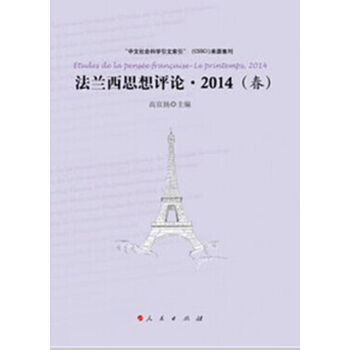

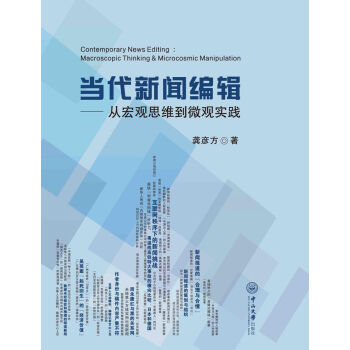
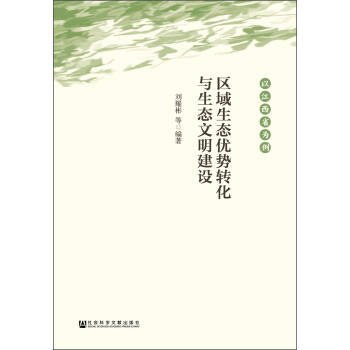



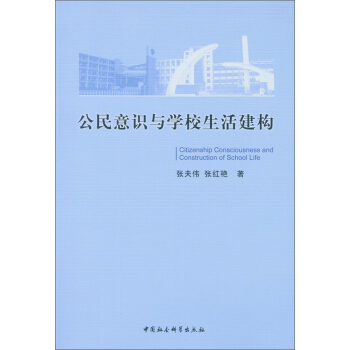

![中國政治傳播研究:基礎與拓展(第1輯) [Studies of Chinese Political Communication Basics and Advances] pdf epub mobi 電子書 下載](https://pic.windowsfront.com/11993843/5821a2b7N4b1c550f.jpg)





